Three numbers, what are their masonic significance? Pythagoras has something to say about them.
The Number Three
The first three steps represent the three principal officers of a lodge, and – though not stated in the ritual – must always refer to Deity, of which three, the triangle, is the most ancient symbol.
Their principal implication here is to assure the Fellowcraft just starting his ascent that he does not climb alone.
The Worshipful Master, Senior, and Junior Wardens are themselves symbolic of the lodge as a whole, and thus (as a lodge is a symbol of the world) of the Masonic world – the Fraternity.
The Fellowcraft is surrounded by the Craft. The brethren are present to help him climb.
In his search for truth, in his quest of his wages in the Middle Chamber, the Fellowcraft is to receive the support and assistance of all in the Mystic Circle; surely an impressive symbol.
If we examine a little into the powers and duties of the Worshipful Master and his Wardens, we may see how they rule and govern the lodge and so by what means they may aid the Fellowcraft in his ascent.
The Number Five
Five has always been a sacred and mystical number; Pythagoras made of it a symbol of life, since it rejected unity by the addition of the first even and the first odd number.
It was therefore symbolic of happiness and misery, birth and death, order and disorder – in other words, life as it was lived.
Egypt knew five minor planets, five elements, five elementary powers.
The Greeks had four elements and added ether, the unknown, making a cosmos of five.
Five is peculiarly the number of the Fellowcraft’s Degree; it represents the central group of the three which form the stairs; it refers to the five orders of architecture; five are required to hold a Fellowcraft’s Lodge; there are five human senses; geometry is the fifth science, and so on.
In the Winding Stairs the number five represents first the five orders of architecture.
The Number Seven
Most potent of numbers in the ancient religions, the number seven has deep significance.
The Pythagoreans called it the perfect number, as made up of three and four, the two perfect figures, triangle and square.
It was the virgin number because it cannot be multiplied to produce any number within ten, as can two and two, two and three, and two and four, three and three.
Nor can it be produced by the multiplication of any whole numbers.
Our ancient ancestors knew seven planets, seven Pleiades, seven Hyades, and seven lights burned before the Altar of Mithras.
The Goths had seven deities: Sun, Moon, Tuisco, Woden, Thor, Friga, and Seatur or Saturn, from which we derive the names of the seven days of our week.
In the Gothic mysteries the candidate met with seven obstructions.
The ancient Jews swore by seven, because seven witnesses were used to confirm, and seven sacrifices offered to attest truth.
The Sabbath is the seventh day; Noah had seven days’ notice of the flood; God created the heaven and the earth in six days and rested on the seventh day; the walls of Jericho were encompassed seven times by seven priests bearing seven rams’ horns; the Temple was seven years in building, and so on through a thousand references.
It is only necessary to refer to the seven necessary to open an Entered Apprentice’s lodge, the seven original officers of a lodge (some now have nine or ten or even more) and the seven steps which complete the Winding Stairs to show that seven is an important number in the Fraternity.
The Seven Liberal Arts And Sciences
In William Preston‘s (1742 – 1818) day a liberal education was comprised in the study of grammar, rhetoric and logic, called the trivium, and arithmetic, geometry, music, and astronomy, called the quadrivium.
Preston endeavoured to compress into his Middle Chamber lecture enough of these to make at least an outline available to men who might otherwise know nothing of them.
In our day and times grammar and rhetoric are considered of importance, but in a secondary way;
Logic is more or less swallowed up as a study in the reasoning appropriate to any particular subject;
Arithmetic, of course, continues its primary importance; but from the standpoint of science, geometry and its offshoots are still the vital sciences of measurement.
Music has fallen into the discard as part of a liberal education; it is now one of the arts, not the sciences.
Astronomy is so interrelated with physics that it is hard to say where one leaves off and the other begins.
As for electricity, chemistry, biology, civics, government, and the physical sciences, they were barely dreamed of in Preston’s day.
So it is not actually but symbolically that we are to climb the seven steps. If the author may venture to quote himself (Foreign Countries, 1925).
William Preston, who put so practical an interpretation upon these steps, lived in an age when these did indeed represent all knowledge.
But we must not refuse to grow because the ritual has not grown with modern discovery. When we rise by Grammar and Rhetoric, we must consider that they mean not only language, but all methods of communication.
The step of Logic means a knowledge not only of a method of reasoning, but of all reasoning which logicians have accomplished.
When we ascend by Arithmetic and Geometry, we must visualize all science; since science is but measurement, in the true mathematical sense, it requires no great stretch of the imagination to read into these two steps all that science may teach.
The step denominated Music means not only sweet and harmonious sounds, but all beauty – poetry, art, nature, loveliness of whatever kind.
Not to be familiar with the beauty which nature provides is to be, by so much, less a man; to stunt, by so much, a starving soul.
As for the seventh step of Astronomy, surely it means not only a study of the solar system and the stars as it did in William Preston’s day, but also a study of all that is beyond the earth; of spirit and the world of spirit, of ethics, philosophy, the abstract – of Deity.
Preston builded better than he knew; his seven steps are both logical in arrangement and suggestive in their order.
The true Fellowcraft will see in them a guide to the making of a man rich in mind and spirit, by which riches only can true brotherhood be practiced.
Article by: Carl H. Claudy
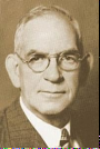
Carl Harry Claudy (1879 – 1957) was an American author, magazine writer, and journalist for the New York Herald.
His association with Freemasonry began in 1908, when, at the age of 29, he was raised a master Mason in lodge Harmony No. 17 in Washington, DC. He served as its master in 1932 and eventually served as Grand Master of Masons in the District of Colombia in 1943.
His Masonic writing career began in earnest when he became associated with the Masonic service Association in 1923, serving as associate editor of its magazine, The master mason, until 1931.
Under his leadership the service Association was brought to a place of predominance through his authorship and distribution of the short talk bulletin which made his name familiar to virtually every lodge in the country.

The Trivium
By: Sister Miriam Joseph
Who sets language policy today? Who made whom the grammar doctor? Lacking the equivalent of l’Académie française, we English speakers must find our own way looking for guidance or vindication in source after source.
McGuffey’s Readers introduced nineteenth-century students to “correct” English. Strunk and White’s Elements of Style and William Safire’s column, “On Language,” provide help on diction and syntax to contemporary writers and speakers.
Sister Miriam Joseph’s book, The Trivium: The Liberal Arts of Logic, Grammar, and Rhetoric, invites the reader into a deeper understanding—one that includes rules, definitions, and guidelines, but whose ultimate end is to transform the reader into a liberal artist.
A liberal artist seeks the perfection of the human faculties. The liberal artist begins with the language arts, the trivium, which is the basis of all learning because it teaches the tools for reading, writing, speaking, and listening.
Thinking underlies all these activities. Many readers will recognize elements of this book: parts of speech, syntax, propositions, syllogisms, enthymemes, logical fallacies, scientific method, figures of speech, rhetorical technique, and poetics. The Trivium, however, presents these elements within a philosophy of language that connects thought, expression, and reality.
“Trivium” means the crossroads where the three branches of language meet. In the Middle Ages and the Renaissance, students studied and mastered this integrated view of language. Regrettably, modern language teaching keeps the parts without the vision of the whole.
Inspired by the possibility of helping students “acquire mastery over the tools of learning” Sister Miriam Joseph and other teachers at Saint Mary’s College designed and taught a course on the trivium for all first year students. The Trivium resulted from that noble endeavor.
The liberal artist travels in good company. Sister Miriam Joseph frequently cites passages from William Shakespeare, John Milton, Plato, the Bible, Homer, and other great writers.
The Paul Dry Books edition of The Trivium provides new graphics and notes to make the book accessible to today’s readers. Sister Miriam Joseph told her first audience that “the function of the trivium is the training of the mind for the study of matter and spirit, which constitute the sum of reality.
The fruit of education is culture, which Mathew Arnold defined as ‘the knowledge of ourselves and the world.'” May this noble endeavor lead many to that end.

Approaching the Middle Chamber: The Seven Liberal Arts in Freemasonry
By: Jaime Paul Lamb
In the culmination of the second section of the Fellowcraft degree, prior to entering the symbolic “middle chamber” of King Solomon’s Temple, the Craftsman must ascend a flight of winding stairs, where important lessons are bestowed upon the Craftsman for future reflection and study.
Unfortunately, few Craftsman have undertaken the study of the Seven Liberal Arts and Sciences, perhaps due to the fact that prior to this book by Brother Lamb, few books have taken an in-depth look at the Seven Liberal Arts and Sciences.
This is a well-written, well-researched, and very approachable book that explores how the Seven Liberal Arts and Sciences relate to Freemasonry, as well as other esoteric traditions.
This book is an instant classic, and a must read for anyone who has tread upon the flight of winding stairs to the middle chamber.
 Old Tiler Talks - Eyes Lifted High The Old Tiler Talks first published in 1925, by Carl Claudy, is a series of short anecdotal stories told in the setting of a new member asking an old tiler for his opinion on various masonic topics. These short articles are still very relevant, 100 years on, and hopefully provide some insight to new members today. |
 Old Tiler Talks - Masonic Libraries The Old Tilers talks first published in 1925, by Carl Claudy, is a series of short anecdotal stories told in the setting of a new member asking an old tiler for his opinion on various masonic topics. These short articles are still very relevant, 100 years on, and hopefully provide some insight to new members today. |
 Old Tiler Talks - So Many Rascals "Why are there so many rascals in the Fraternity, and why don't we turn them out?" a new member voiced to the old tiler for his opinion. These short articles are still very relevant, 100 years on, and hopefully provide some insight to new members today. |
 Old Tiler Talks - The Greatest Work The Old Tiler asked, "what is the greatest work of Masonry?" The New Brother sat by the guardian of the door and pulled out his cigar case. - Another instalment of wisdom by Carl Claudy, The Greatest Work |
 Old Tiler Talks - Why Men Love Freemasonry The 'Old Tiler Talks' first published in 1925, by Carl Claudy, is a series of short anecdotal stories told in the setting of a new member asking an old Tiler for his opinion on various Masonic topics. These short articles are still very relevant, 100 years on, and hopefully provide some insight to new members today. |
 Old Tiler Talks - Seeking a Little Light The Old Tilers talks first published in 1925, by Carl Claudy, is a series of short anecdotal stories told in the setting of a new member asking an old tiler for his opinion on various masonic topics. These short articles are still very relevant, 100 years on, and hopefully provide some insight to new members today. |
 The new mason laments that practically speaking, Masonry is a failure, and it depresses me … Masonry cannot be a failure, because men fail as Masons. The Old Tilers talk by Carl Claudy |
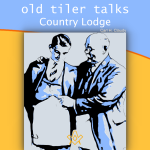 Old Tiler Talks - Country Lodge A lesson in the importance of an open mindset to observe, not to judge, but to learn and accept that we can achieve the desired outcome employing a different process. by Carl Claudy |
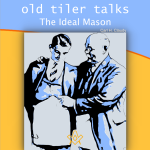 Old Tiler Talks - The Ideal Mason "What's your ideal of Freemasonry?" asked the Younger Mason - A short anecdotal story told in the setting of a new member asking an old tiler for his opinion on various masonic topics by Carl Claudy |
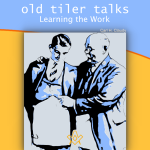 Old Tiler Talks - Learning the Work A short anecdotal story told in the setting of a new member asking an old tiler for his opinion on various masonic topics by Carl Claudy |
 Masonic first appointments and promotions might appear to be inequitable for one point a view, but some times, one point does not show the whole picture. A perfectly articulated story by Claudy, we should not compare one persons abilities with another. |
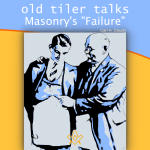 Old Tiler Talks - Masonry's 'Failure' Masonry fails because it doesn’t interest men sufficiently to make them practice what they preach. A perfectly articulated story by Claudy Masonry does not fail men. Men fail Masonry. Masonry has the teachings. |
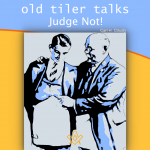 A perfectly articulated story by Claudy reminds us of a lesson from the Second Degree Charge; in the decision of every trespass against our rules, judge with candour, admonish with friendship, and reprehend with mercy. |
 Old Tiler Talks - A Masonic Speech A Masonic Speech - I can tell you the essence of appeal. It is drama. If you want your hearers to hang on your words, dramatize your subject |
 Old Tiler Talks - A Mason's Christmas A Mason's Christmas - Do you believe in Christmas celebrations should be held by the lodge ? Should members be asked to contribute to one and engage in Christmas festivities ? What is the old tilers take on this ? |
 Advertising - We would do more good in the world if we advertised ourselves more… Why ? |
 Uncover the mystery behind one of the oldest and most widespread symbols denoting God. |
 Do you want to discover the originals of the five points of fellowship ? |
 The mystery behind the two great pillars that stood at the porchway entrance of King Solomon Temple |
 Three numbers, what are their masonic significance? Pythagoras has something to say about them |
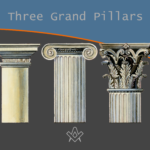 What are the Three Grand Pillars ?, wisdom, strength, and beauty - then later we hear of the Doric, Ionic, and Corinthian columns |
 This emblem contains more real food for thought than any other in the lecture of the Sublime Degree. |
 The Hiramic Legend is the glory of Freemasonry; the search for that which was lost is the glory of life |
 How are the Fellowcraft's five steps connected the five senses of human nature |
 How to explain the principle tents of the craft to a newly made brother |
 What are the lesser lights and where are they placed on our Lodges |
 Like so much else in Freemasonry the Middle Chamber is wholly symbolic |
 In the true sense of the words Freemasonry is not a secret society but a society with secrets. |
 Three Great Lights – the Volume of the Sacred Law, the Square, and the Compasses |
 Entered Apprentice Lambskin Apron; More ancient than the Golden Fleece or Roman Eagle, more honourable than the Star and Garter ... |
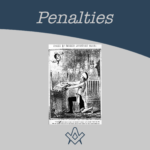 To the initiate, the penalty in his obligation comes with a shock of surprise and sometimes consternation. |
 What is a point within a circle |
masonic knowledge
to be a better citizen of the world
share the square with two brothers

click image to open email app on mobile device










